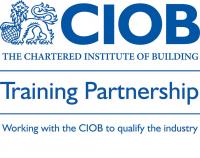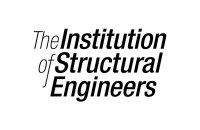The built environment – comprising infrastructure and buildings – is responsible for around 40% of the UK’s primary energy use, and a similar proportion of carbon emissions. To avoid dangerous levels of climate change, it is essential that the sector decarbonises by mid-century, and that this transformation occurs globally. Moreover, existing and future built environment assets must be adapted to the climate change that is already locked-in, and designed holistically to be part of climate-resilient, sustainable societies.
This is Part 1 of a two-part course. It sets out the key elements of climate science and focusses on the implications of climate impacts for the built environment sector, including present climate change and foreseeable future scenarios. The required response - climate resilient development - is explored through the latest research, case studies and examples.
Aims & Objectives:
Objectives:
The Impacts and Resilience course is designed to provide engineers, other professionals, and leaders with an understanding of the key elements of climate impacts and resilience in the context of the built environment sector. Participants will also gain an understanding of the considerable business development opportunities that global climate action presents for the sector.
Learning outcomes:
On completion of this course, delegates will be able to:
- Describe the key elements of climate science; understanding its development as a discipline and summarising the latest findings of the IPCC
- Describe the relationship between emissions and climate change and explain the importance of carbon budgets and ‘net zero’ to the mitigation of dangerous climate change
- List the main impacts of climate change under existing warming levels and under projected future emissions scenarios
- Identify and examine examples of adaptation practice from case studies and examples, including the delegates’ own experience
- Define climate resilient development in the context of urban and infrastructure systems
- Debate the effectiveness of different adaptation options including traditional ‘hard’ infrastructure and nature-based solutions
- Understand the concept of maladaptation and explain how to avoid it
- Describe the idea of ‘win-win’ or triple-win solutions with respect to climate resilient development and other drivers including reducing emissions and the wider UN Sustainable Development Goals
- Understand the importance of financial incentivisation for resilience of physical assets and describe common examples
- Describe progress on climate resilience in the context of projected climate change impacts
- Describe, in the context of their organisation, business development opportunities arising from climate change / action
Course Outline:
Introduction to climate change
- Climate change - a brief history
- Greenhouse gases and the evidence for anthropogenic climate change
Climate impacts and risks
-
A summary of the 6th IPCC assessment reports on climate science and impacts:
-
The current state of the climate
-
Projected future scenarios
-
Global and UK impacts
-
Climate resilient development
-
Adaptation and resilience for infrastructure:
-
Responding to sea level rise
-
Nature-based solutions
-
Retrofitting assets
-
Avoiding maladaptation
-
- Creating ‘win-win’ and triple-win solutions
- The resilience market (who pays for climate action or inaction?)
- Progress so far…
Opportunities
-
Business opportunities for forward-thinking companies
Mode of Delivery:
- Presentation of material (online typically)
- Visual aids e.g. short video
- Group discussion
- Group exercises with feedback (using e.g. breakout rooms)
- Q&A sessions
Benefits of Attending:
The course will equip participants with a good understanding of climate change with respect to the built environment. It covers the latest climate science, current practice and trends in adaptation and resilience, and examples of ‘win-win’ holistic solutions for the built environment sector.
At the end of the course participants should feel engaged with the climate challenge and have increased agency to drive positive change within their projects and organisations.
Business leaders should feel encouraged and motivated by the commercial opportunities highlighted in the course.
Intended For:
The course is intended for engineers, other professionals, and leaders working in the built environment sector.
Pre-Course Requirements:
- Complete a pre-course questionnaire
- Prepare notes of examples of any climate adaptation plans, strategies or project work that they or their employer has been involved with








